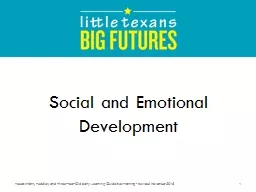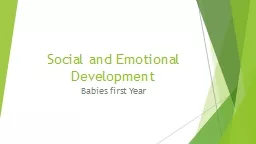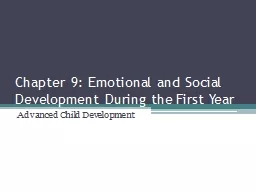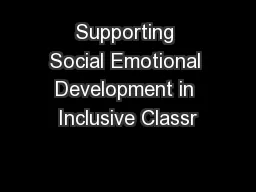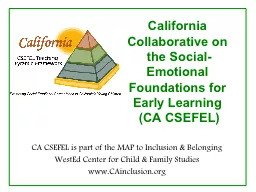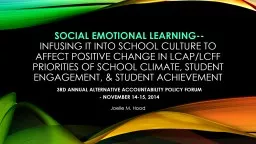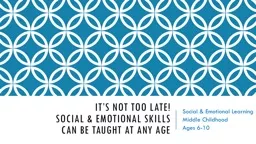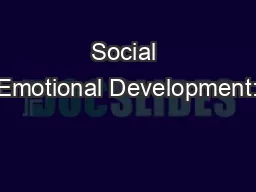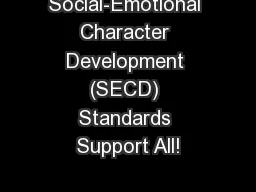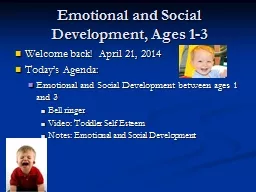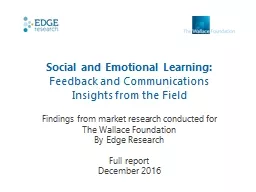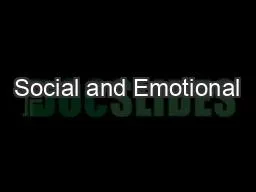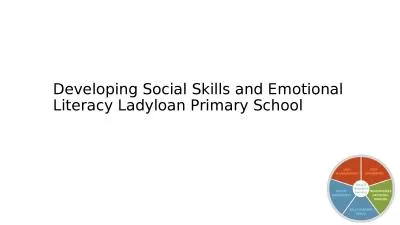PPT-Social and Emotional Development
Author : marina-yarberry | Published Date : 2018-09-19
1 Texas Infant Toddler and ThreeYearOld Early Learning Guidelines Training Revised November 2015 Agenda Responsive Caregiving Attachment SelfAwareness Emotional
Presentation Embed Code
Download Presentation
Download Presentation The PPT/PDF document "Social and Emotional Development" is the property of its rightful owner. Permission is granted to download and print the materials on this website for personal, non-commercial use only, and to display it on your personal computer provided you do not modify the materials and that you retain all copyright notices contained in the materials. By downloading content from our website, you accept the terms of this agreement.
Social and Emotional Development: Transcript
Download Rules Of Document
"Social and Emotional Development"The content belongs to its owner. You may download and print it for personal use, without modification, and keep all copyright notices. By downloading, you agree to these terms.
Related Documents

